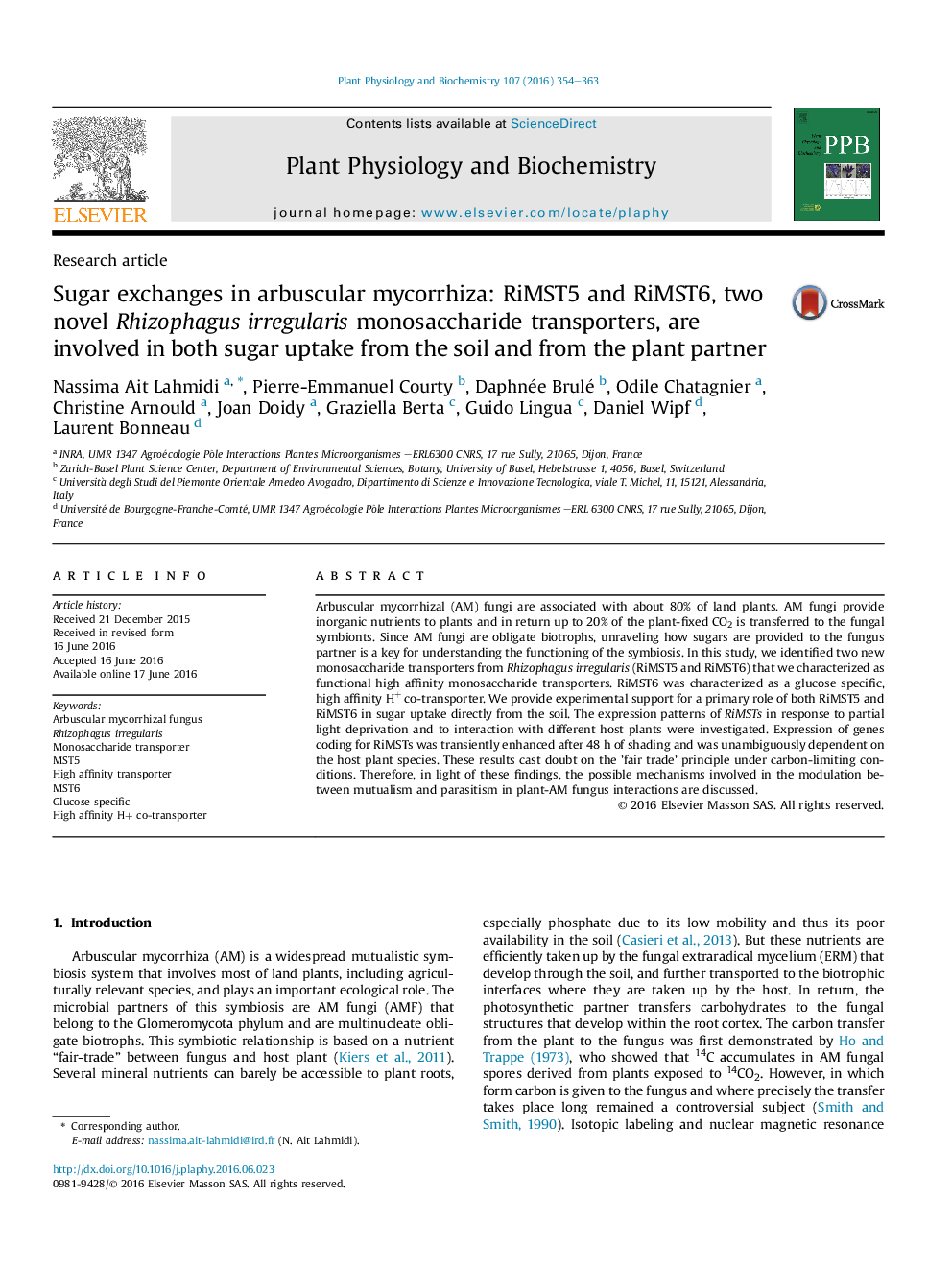| Article ID | Journal | Published Year | Pages | File Type |
|---|---|---|---|---|
| 2014681 | Plant Physiology and Biochemistry | 2016 | 10 Pages |
•RiMST5 and RiMST6 are two new monosaccharide transporters from Rhizophagus irregularis.•RiMST5 is a high affinity-low capacity monosaccharide transporter.•RiMST6 is as a glucose specific, high affinity H+ co-transporter.•RiMST5 and RiMST6 are involved in sugar uptake directly from the soil.•Expression of RiMST depends on plant species and on light intensity.
Arbuscular mycorrhizal (AM) fungi are associated with about 80% of land plants. AM fungi provide inorganic nutrients to plants and in return up to 20% of the plant-fixed CO2 is transferred to the fungal symbionts. Since AM fungi are obligate biotrophs, unraveling how sugars are provided to the fungus partner is a key for understanding the functioning of the symbiosis. In this study, we identified two new monosaccharide transporters from Rhizophagus irregularis (RiMST5 and RiMST6) that we characterized as functional high affinity monosaccharide transporters. RiMST6 was characterized as a glucose specific, high affinity H+ co-transporter. We provide experimental support for a primary role of both RiMST5 and RiMST6 in sugar uptake directly from the soil. The expression patterns of RiMSTs in response to partial light deprivation and to interaction with different host plants were investigated. Expression of genes coding for RiMSTs was transiently enhanced after 48 h of shading and was unambiguously dependent on the host plant species. These results cast doubt on the ’fair trade’ principle under carbon-limiting conditions. Therefore, in light of these findings, the possible mechanisms involved in the modulation between mutualism and parasitism in plant-AM fungus interactions are discussed.
